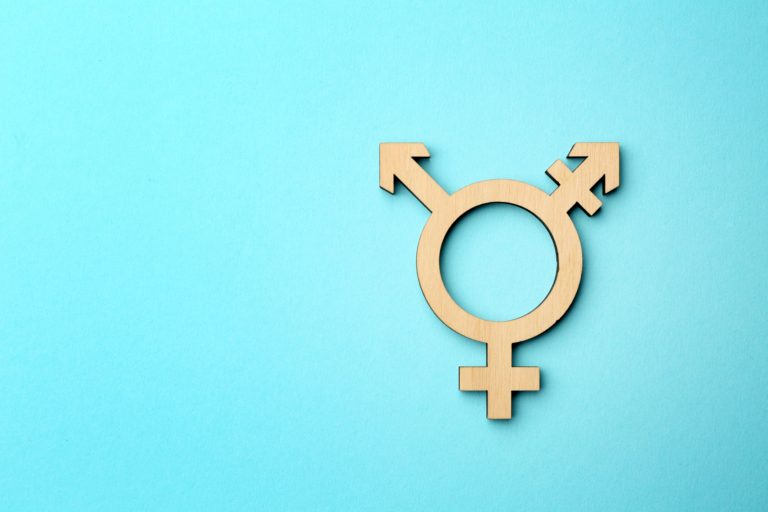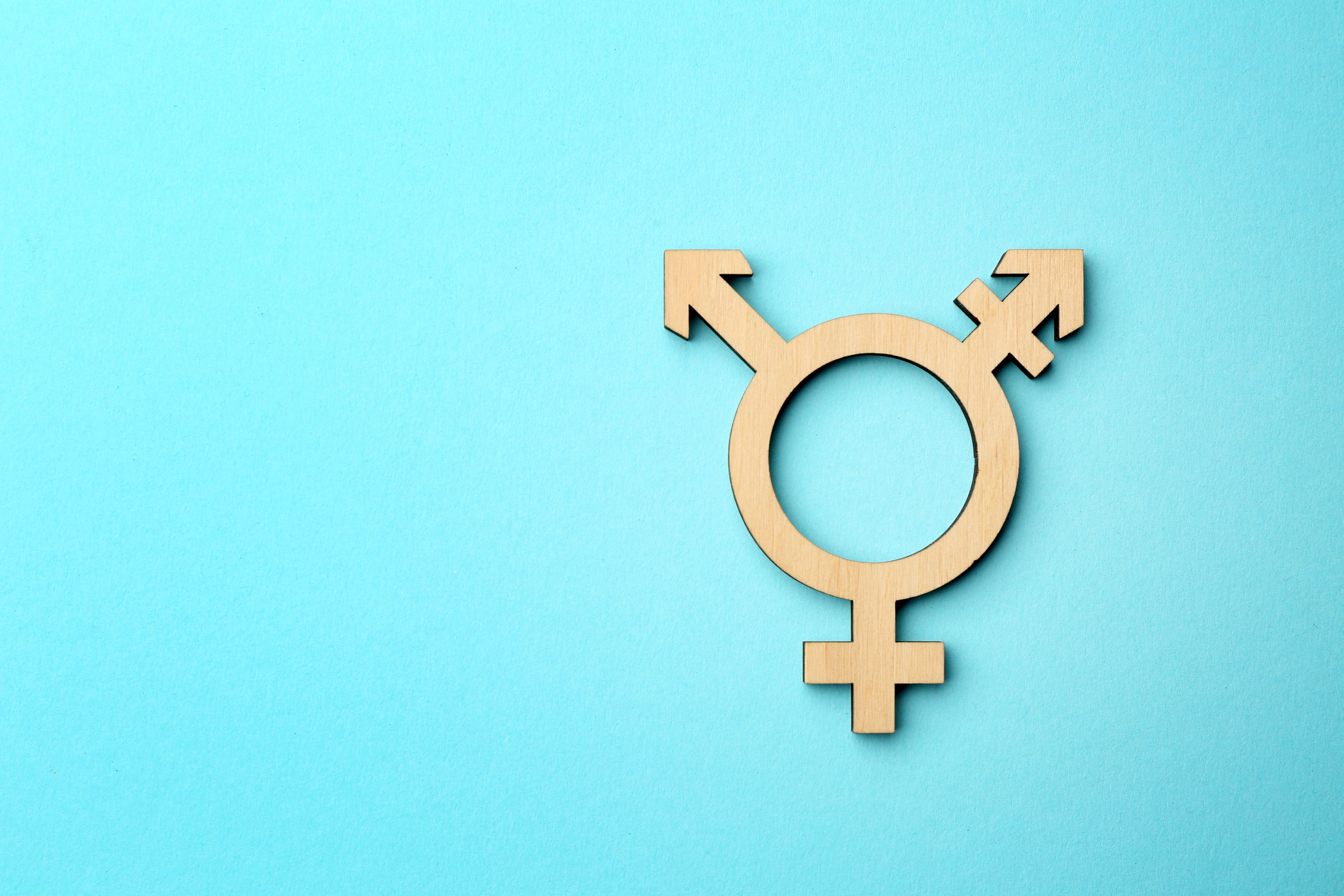

CASE VIGNETTE
“Jessica,” a 13-year-old transgender girl, lives in a rural community where no other individuals identify as transgender. She has a supportive family and was able to safely come out to her parents. She socially transitioned 2 years ago. Despite support at home, Jessica and her family have faced challenges at school. The other teens in her grade did not accept her when she came out. They started to call her names such as “she-male” or “it.” She started feeling depressed and avoiding school. Her parents intervened and spoke with a counselor at school. The counselor remembered a training by the State Department of Education where they discussed a comprehensive bill supporting transgender youth. The school was required to educate staff and eliminate any discrimination. The teachers were given resources to help them better understand Jessica’s journey, and those resources helped them support her better. The bullying decreased and Jessica’s depression, anxiety, and school attendance improved.
“John,” a 16-year-old transgender boy, lives in a large city and recently started high school. He received a diagnosis of depression and has had 2 hospital admissions for suicide attempts beginning at age 12. He has explored his gender over the past 3 years and came out to his parents a year ago after discussing it with his therapist and psychiatrist, both of whom have been supportive. The treating team was able to help his parents learn about John’s gender development, and his parents also became supportive.
Unfortunately, John’s school has been a major stressor for him. He was bullied for being a tomboy at school and is scared to come out. He wants to start testosterone treatment but fears a negative reaction from his peers. His parents have spoken to the school, asking administrators to help with his transition and provide a safe environment to come out.
One of the parents of another student who was involved in bullying John raised issues with his transitioning and referred to the recent bill that their state passed, which bans transgender children from using their bathroom of choice. John has been holding his urine at school until he gets home. His depression escalated, and his grades dropped. His family is struggling to find a safe environment for him.
Gender-diverse individuals have been marginalized and discriminated against in many communities throughout history. Modern psychiatry initially adopted a pathological view of transgender identity as well. However, the work of human rights advocates, supported by growing medical evidence, has caused medical and health care organizations to reverse their discriminatory stances against transgender individuals over the past few decades.1 Compelling evidence shows that transgender identities or nonconforming gender presentations are not pathological nor indicate a disorder. These individuals may require medical interventions to stop the course of endogenous pubertal changes in order to match their desired gender identity, as outlined in guidelines from the World Professional Association for Transgender Health Standards of Care and Endocrine Society.2
It is well established that discrimination negatively impacts transgender and gender-nonconforming youth. The rate of depression and anxiety among transgender and gender-nonconforming youth is several times higher than the rate of their cisgender peers.3 These youths are more likely to seriously consider suicide or illegally use substances. These effects are mainly due to structural discrimination, both in society’s attitudes and the legislative system.4 Coercive interventions that even try to alter gender identity, sometimes called “conversion therapy,” are harmful and ineffective.5
Lack of school belonging as well as interpersonal microaggressions have been shown to be directly linked to suicidality and lifetime suicide attempts.6 Conversely, simple acts of affirmation have demonstrated profound positive effects. Even the repeated use of a transgender or gender-nonconforming youth’s chosen name can reduce suicidal thoughts and behavior.7 The more widely it is used, the stronger the effect.
The positive effects of gender-affirming care on transgender or gender diverse youth are similarly well-documented. Gender-affirming care improves positive mental health outcomes, and youth who receive it are less likely to attempt suicide.8 Pubertal suppression decreases depressive symptoms, as well as behavioral and emotional problems.9 Likewise, gender-affirming hormone therapy also decreases behavioral and emotional issues and improves body image and psychological well-being.10
Recently, Jessica began puberty. She is not certain whether she wants to take gender-affirming hormones. Her family physician recommended that Jessica and her family speak with an endocrinologist. Jessica’s town does not have an endocrinologist. In fact, the nearest endocrinologist is Dr Sanchez, whose practice is about an hour away.
Dr Sanchez keeps up with the latest literature and knows about the beneficial effects of gender-affirming care. He mentioned the possibility of taking leuprolide to temporarily suppress puberty while Jessica decides what she would like to do in the future. He consulted with a colleague who is more experienced in this area to ensure the correct dosing. He also helped Jessica decide to preserve fertility by freezing her sperm. Jessica’s family enlisted a psychiatrist to ensure good psychological support. The psychiatrist coordinated with Jessica’s school counselor for wraparound care.
John’s parents decided to pull him out of his district high school. He enrolled in a day treatment program, and they are working with their psychiatrist to find an alternative school environment where John can continue his education without discrimination. Most schools are pressured by the recent legislation and fear an antitransgender parent at school can sue them. For now, the parents decided to home-school John and focus on his recovery from depression. They consulted with a pediatric endocrinologist to discuss hormonal treatment options. Dr Smith has treated a few other transgender youths.
The state where John lives recently proposed a law to block gender-affirming care in transgender youth. Under this law, the psychologist and psychiatrist who both directly participated in John’s care would be fined, and Dr Smith would be fined and jailed for prescribing hormonal treatment. Without his treatment team, John feels hopeless. If this bill is passed, John will not be able to start testosterone treatment until he is 18 years old.
Despondent, John contemplated suicide. The focus of his care shifted toward keeping him alive. His mental health team reached out to their local professional organizations to mobilize other colleagues against this discriminatory bill.
The rights of transgender youth have become a battleground for political agendas at the intersection of structural discrimination and gender-affirming care. Dozens of states have proposed bills that would criminalize gender-affirming care (Figure). Doctors who perform this care would be subject to fines, imprisonment, or even loss of licensure. Laws criminalizing gender-affirming care are a major legislative theme this session, but dozens of other antitransgender bills join them. Currently there are more than 45 such antitransgender bills in local governments across the United States, following failed proposal bills in several states last year and similar so-called “bathroom bills” over previous years.11 A majority of these bills seek to deny transgender youth their affirmed gender, forcing them to use restrooms or play on sports teams according to their sex assigned at birth (so-called sport and bathroom bills). Only 8 of the proposed antitransgender bills this session were discriminatory in a way other than these 2 categories.
The stories of Jessica and John are the same stories of hundreds of thousands of youth in the United States. Child psychiatrists and other mental health professionals are treating many of these youth. Their presentation can be complex, and treatment requires an in-depth understanding of their gender development, family dynamics, and psychosocial environment. Care can also be further complicated by state legislation. Physicians and other health care professionals are bound ethically not to harm their patients and provide medically necessary services to help them. Discriminatory bills, such as those proposed where John lives, can create a conflict for health care professionals between ethically appropriate care and legally acceptable guidelines. Although some think that delaying affirmative care until the age of majority is a harmless option, there is solid and growing evidence that affirmative care improves a transgender youth’s mental health.
Establishing good mental health for a transgender youth often starts from a nucleus of support, whether that is in the home, the school, or a close group of friends. This support can buffer these youth from the negative impacts of antitransgender legislation. As in the care of many other youths, identifying ways to increase available support or add additional support provides significant benefit to overall psychological well-being. Psychiatrists can be a part of that nucleus of support for these youth.
In a more active role, doctors can be crucial in advocating for the well-being of transgender youth. Major medical and health care associations have local organizations in each state. Educating members of these organizations and mobilizing them to advocate against discriminatory bills can be an important tool to help youth like John, whose life can change significantly with a single law. As such, it is vital that advocates call their state representatives when antitransgender legislation is introduced. If mental health experts do not educate legislators on the mental health impacts of these bills, no one else will. Psychiatrists have a duty to patients that goes beyond the boundaries of the office; in some instances, the ethical dilemmas may help psychiatrists recognize the need to raise their voices and stand up for their patients (Table).
Concluding Thoughts
There is much that psychiatrists and other mental health professionals can do to support transgender youth patients: donate time or money to organizations that support transgender youth; speak and advocate for transgender youth by working with state professional organizations; call state legislature representatives when antitransgender legislation arises, highlighting the adverse mental health impacts such legislation would cause; and help establish more support at the family and school level.
Dr Chavez is a psychiatrist in the United States Department of Veterans Affairs’ newly created lesbian, gay, bisexual, transgender, queer specialty service in Colorado. Dr Shadianloo is a clinical assistant professor of psychiatry at the Donald and Barbara Zucker School of Medicine at Hofstra/Northwell.
References
1. Davies RD, Davies ME. The (slow) depathologizing of gender incongruence. J Nerv Ment Dis. 2020;208(2):152-154.
2. Coleman E, Bockting W, Botzer M, et al. Standards of care for the health of transsexual, transgender, and gender-nonconforming people, version 7. Int J Transgend. 2012;13(4):165-232.
3. Becerra-Culqui TA, Liu Y, Nash R, et al. Mental health of transgender and gender nonconforming youth compared with their peers. Pediatrics. 2018;141(5):e20173845.
4. Chavez, AM, Janssen A. Structural stigma. JAACAP Connect. 2019;6(3):11-13.
5. Turban JL, Beckwith N, Reisner SL, Keuroghlian AS. Association between recalled exposure to gender identity conversion efforts and psychological distress and suicide attempts among transgender adults. JAMA Psychiatry. 2020;77(1):68-76.
6. Austin A, Craig SL, D’Souza S, McInroy LB. Suicidality among transgender youth: elucidating the role of interpersonal risk factors. J Interpers Violence. 2020:886260520915554.
7. Russell ST, Pollitt AM, Li G, Grossman AH. Chosen name use is linked to reduced depressive symptoms, suicidal ideation, and suicidal behavior among transgender youth. J Adolesc Health. 2018;63(4):503-505.
8. Turban JL, King D, Carswell JM, Keuroghlian AS. Pubertal suppression for transgender youth and risk of suicidal ideation. Pediatrics. 2020;145(2):
e20191725.
9. de Vries AL, Steensma TD, Doreleijers TA, Cohen-Kettenis PT. Puberty suppression in adolescents with gender identity disorder: a prospective follow-up study. J Sex Med. 2011;8(8):2276-2283.
10. de Vries AL, McGuire JK, Steensma TD, et al. Young adult psychological outcome after puberty suppression and gender reassignment. Pediatrics. 2014;134(4):696-704.
11. Legislative tracker: anti-transgender legislation. Freedom for All Americans. Accessed March 23, 2021. https://freedomforallamericans.org/legislative-tracker/anti-transgender-legislation ❒